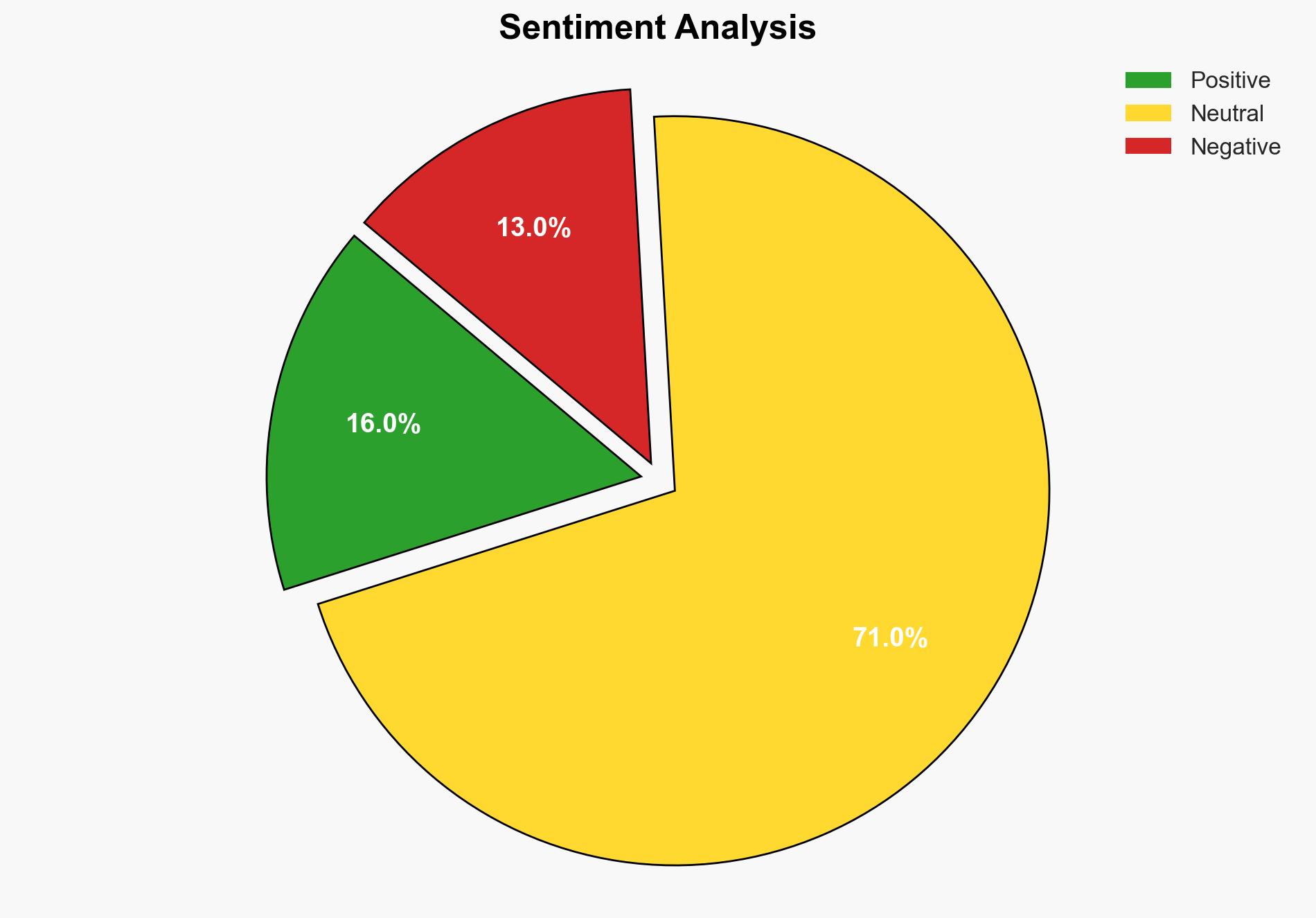Japanese Automakers Search for Winning Strategy – Newsonjapan.com
Published on: 2025-11-13
AI-powered OSINT brief from verified open sources. Automated NLP signal extraction with human verification. See our Methodology and Why WorldWideWatchers.
Intelligence Report: Japanese Automakers Search for Winning Strategy – Newsonjapan.com
1. BLUF (Bottom Line Up Front)
Japanese automakers face significant strategic challenges due to increased competition from Chinese electric vehicle (EV) manufacturers and the impact of tariffs. The most supported hypothesis is that Japanese automakers will need to accelerate their transition to EVs and enhance their global competitiveness to maintain market share. Confidence Level: Moderate. Recommended action includes strategic partnerships and increased investment in EV technology.
2. Competing Hypotheses
Hypothesis 1: Japanese automakers will successfully adapt to the evolving market by accelerating their EV strategies and leveraging their existing global sales networks, thereby maintaining their competitive edge.
Hypothesis 2: Japanese automakers will struggle to keep pace with Chinese manufacturers’ aggressive EV advancements and tariff impacts, leading to a decline in global market share.
The first hypothesis is more likely due to Japanese automakers’ historical adaptability and strong global presence. However, the pace of adaptation and investment in EV technology will be critical.
3. Key Assumptions and Red Flags
Assumptions: It is assumed that Japanese automakers have the financial and technological capability to pivot towards EVs effectively. Another assumption is that tariff rates will stabilize, allowing for strategic planning.
Red Flags: Potential underestimation of Chinese manufacturers’ speed and innovation in EV technology. Additionally, reliance on stable tariff rates may be overly optimistic given geopolitical uncertainties.
4. Implications and Strategic Risks
Economic Risks: Continued tariff pressures could erode profit margins, impacting R&D investment capacity.
Political Risks: Geopolitical tensions, particularly involving China and the U.S., could further complicate operational strategies.
Technological Risks: Lagging in EV technology development could result in loss of market relevance.
5. Recommendations and Outlook
- Actionable Steps: Form strategic alliances with tech firms to enhance EV capabilities. Increase investment in R&D for EV technology and infrastructure.
- Best Scenario: Japanese automakers successfully transition to EVs, maintaining market share and profitability.
- Worst Scenario: Failure to adapt leads to significant market share loss to Chinese manufacturers.
- Most-likely Scenario: Gradual adaptation with mixed results, requiring ongoing strategic adjustments.
6. Key Individuals and Entities
Takaki Nakanishi: Analyst providing insights into the automotive sector.
Toyota, Honda, Nissan: Key Japanese automakers facing strategic challenges.
Nexperia: Dutch semiconductor maker affecting Honda’s production.
7. Thematic Tags
Regional Focus: Japan, China, Global Automotive Market, Electric Vehicles, Tariffs
Structured Analytic Techniques Applied
- Causal Layered Analysis (CLA): Analyze events across surface happenings, systems, worldviews, and myths.
- Cross-Impact Simulation: Model ripple effects across neighboring states, conflicts, or economic dependencies.
- Scenario Generation: Explore divergent futures under varying assumptions to identify plausible paths.
Explore more:
Regional Focus Briefs ·
Daily Summary ·
Methodology





